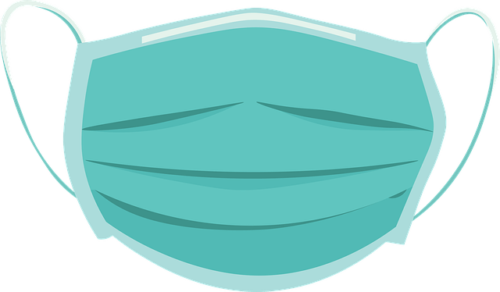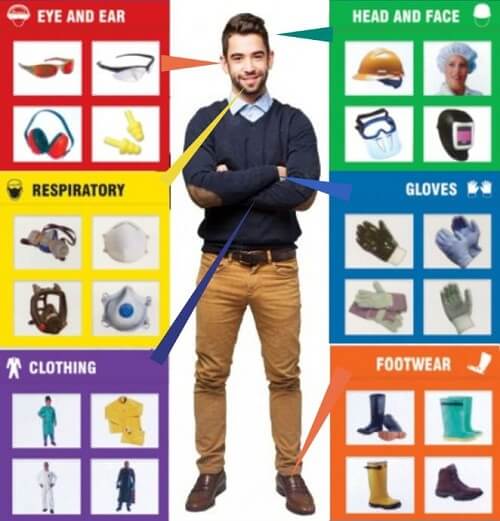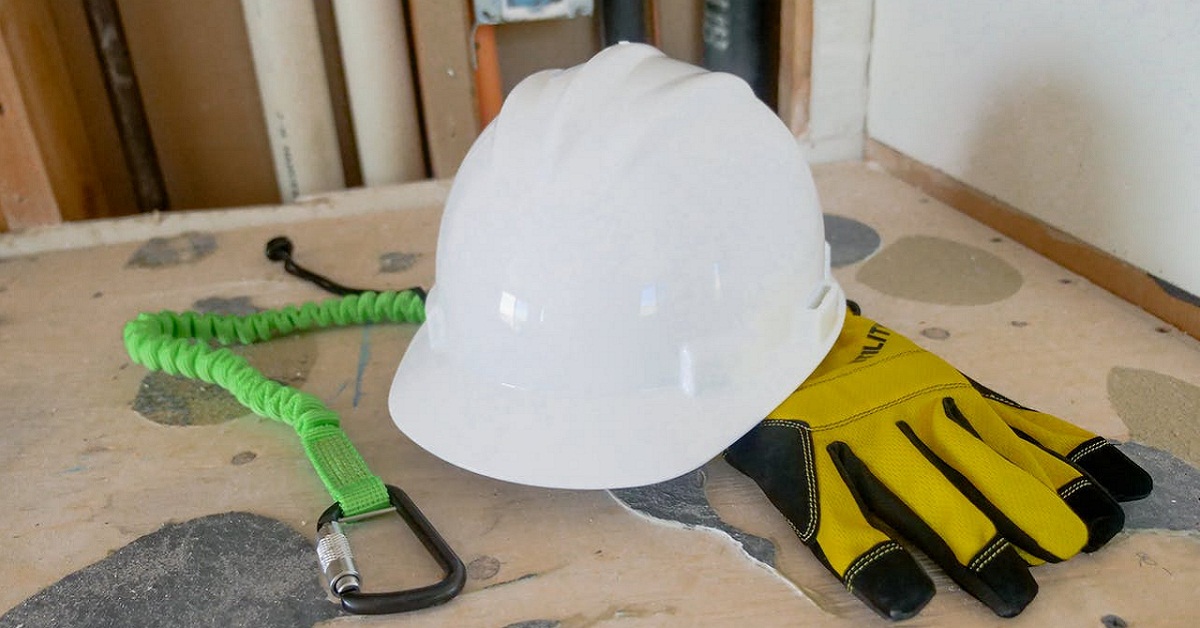The importance of PPE and its uses is to improve occupational safety. It is important to know about the personal protective equipment PPE and its uses. Always remember “Be first safe then work”. Safety is important for each work and the responsibility of each worker. A worker doesn’t have to know how to complete this work. It’s important to know how to complete the job safely so that the workers can save themselves and others from hazards.
Importance of PPE and its uses
Our body parts are the precious gift of nature, so we should take care of our body parts. Every activity we perform in our lives is possible due to our body parts.
PPE Hazard Matrix
The PPE (Personal Protective Equipment) Hazards Matrix is a tool designed to help identify and evaluate workplace hazards. Ensuring appropriate PPE is selected according to the risks. This matrix helps you to select the PPE for your safety according to the hazard and.
Key Elements of the PPE Hazards Matrix
- Hazard Categories:
- The matrix lists common types of workplace hazards, often divided into categories such as:
- Physical Hazards: Noise, vibration, temperature extremes, impact, falling objects.
- Chemical Hazards: Exposure to corrosives, solvents, gases, or other toxic substances.
- Biological Hazards: Pathogens, viruses, bacteria, or mold.
- Radiation Hazards: UV, X-ray, or other ionizing/non-ionizing radiation.
- Ergonomic Hazards: Strains due to repetitive motion or poor posture.
- The matrix lists common types of workplace hazards, often divided into categories such as:
- Hazard Description:
- Detailed descriptions of each hazard, including the conditions under which they occur, the severity of potential harm, and the duration of exposure.
- Recommended PPE:
- Specific PPE is recommended to address each hazard. Examples include:
- Head Protection: Hard hats for falling objects.
- Eye and Face Protection: Goggles or face shields for chemical splashes or flying particles.
- Hearing Protection: Earplugs or earmuffs for loud environments.
- Respiratory Protection: Masks or respirators for inhalation hazards.
- Hand Protection: Gloves resistant to chemicals, cuts, or heat.
- Body Protection: Aprons, lab coats, or flame-resistant clothing.
- Foot Protection: Steel-toed boots or slip-resistant footwear.
- Specific PPE is recommended to address each hazard. Examples include:
- Risk Levels:
- Some matrices include columns or rows to indicate the risk level (e.g., low, medium, high) associated with each hazard, guiding the selection of PPE with sufficient protection.
- Control Measures:
- Incorporates the hierarchy of controls, emphasizing that PPE should be the last line of defense, after engineering, administrative controls, and safe work practices have been implemented.
- Special Considerations:
- Factors like environmental conditions (e.g., wet environments), compatibility with other PPE, and worker comfort are sometimes included.
Benefits of the PPE Hazards Matrix
- Systematic Approach: Ensures all potential hazards are reviewed.
- Customization: Allows tailoring to specific industries or jobs.
- Compliance: Helps meet regulatory requirements (e.g., OSHA standards).
- Efficiency: Streamlines PPE selection and training processes.
By following the matrix, employers can ensure that their workers are adequately protected while promoting safety and compliance in the workplace.
Specifically, when we work in a factory we face many hazards like acidic liquids, hazards of machines, and fire hazards. In this case, if we do not use PPE it could be dangerous for us and cause death or serious injury. Our body parts could be partially or completely affected.
When we discuss PPE and its uses, showing details of PPE is very necessary
Safety Helmet
Our head is the most sensitive and fragile part of our body. Serious injuries to the head can cause death. In workplaces where hazards of something falling, something hitting, and standing or sitting in narrow spaces can cause a head injury, the helmet is very necessary in these cases. Make it your habit while working in hazardous places.
(For more details about safety helmets)

Gas Mask/Dust Mask
In all places where hazards of fluff, dust, and smoke, the face mask is very necessary.
In all places where hazards of dangerous gases, chemical vaporization, and fumes, the gas mask is very necessary.
There are two types of gas masks:
1. Full face mask 2. Half face mask.
(for more details about masks)

Cover all
While working on machines always wear fitting, coverall, and active wear clothes. A loose dress can be dangerous while working on a machine that has moving parts. For this type of work, always wear the company’s recommended dress. (For more details about coverall)
Safety Gloves
That’s why our hands are more related to our work so our hands face more hazards and could be injured. The hazards that affect our hands like sharp edges, crashes between two parts, burning by heat, chemical reactions, and electric shocks are common in industries and homes. To protect our hands from these hazards, use appropriate gloves according to the work. (For more details about safety gloves)
Safety Shoes
While working to protect your foot from the hazards of hitting parts and pouring hot melts and chemical hazards, always wear safety shoes. There are several types of safety shoes according to workplace risk assessment there are available in the market.
1. Metal toe shoes for mechanical work
2. Long rubber shoes for chemical work
3. Rubber shoes for electric work
(For more details about safety shoes)
Spectacles/Goggles
While we are working, our eyes continuously open and focus on the working point, that’s why our eyes face some serious hazards. Always wear safety goggles or face shields, which should be used according to work conditions. Like:
1. Face shield or colored goggles for welding work
2. Closed goggles for chemical handling
3. Face shield for grinding and cutting
(For more details about spectacles and goggles)
Ear Plug/Ear muff
In a workplace where the noise and noise can affect the ears, the ear plug or ear muff is very important to wear. If the noise frequency is 85 decibels then ear plugs and ear muffs are necessary to wear. The ear plug or ear muff is recommended by the doctor after Audiometric tests.
(For more details about ear plug/ear muff)
Safety belt
A safety belt is a specific-shaped belt cross with a long strap with a metal hook. While working at more than 6 feet in height, the hook is gripped to a stationary bar or other object for safety in case it slips. It saves the worker from falling to the floor. The length of the belt should be less than your height. (For more details about safety belts)
SCBA (Self-Contained Breathing Apparatus)
In workplaces where there is less oxygen and the risk of hazardous gases, SCBA is very necessary for workers for artificial breathing. For example, storage tanks, trenches, ducts, vessels, etc. SCBA saves the worker from some unexpected incidents. (For more details about SCBA (Self-Contained Breathing Apparatus)
What do you mean by PPE?
PPE means Personal Protective Equipment. PPEs are physical objects that you use to protect yourself from hazards. PPEs protect your body parts while working in hazardous workplaces. Safety helmets protect your head, safe shoes protect your feet and gloves protect your hands. The importance of PPE and its uses are described in detail above.
What are 4 pieces of PPE?
4 types of PPE to protect your main 4 body parts.
- Safety helmet for head safety.
- Safe shoes for foot safety.
- Gloves for hand safety.
- Goggles/face shield for eye safety.

Why is PPE important?
Personal Protective Equipment (PPE) are items you can wear/use to protect your body against various hazards. Without PPEs, any incident can affect your body in case of injury or disability. PPEs are important because they prepare you for health and safety risks and give you extra protection and mental satisfaction in the event of an accident or against the elements.
What standard of PPE is required?
The OSHA standard 29 CFR 1910.132 presents PPEs for industry workers
OSHA (Occupational Safety and Health Administration) according to regulation 29 CFR 1910.132. PPEs are very essential in the general industry for the protection of employees. PPE and its user training are also held by OSHA.
What type of PPE?
- Construction Site Workers‘ PPEs
- Safety helmet, safety shoes, gloves, masks, Harness.
- Chemical worker PPE.
- face shields, gloves, glasses, goggles, gowns, head coverings, masks, respirators, or shoe covers.
- Machine Operator PPEs
- gloves, glasses, goggles, gowns, helmets, masks, respirators, or shoe covers.
- Mechanical worker PPEs
- Cotton gloves, Safety helmets, Safety shoes, and masks.
- Hot work PPEs
- face shields, welding gloves, welding goggles, masks, and safety shoes.
- Grinding work PPEs
- face shields, gloves, glasses and goggles, masks, and safety shoes.
- Electrical worker PPEs
- Electric gloves, Rubber mate, Rubber shoes, masks.
What is the full name of PPE?
PPE (Personal Protective Equipment).
What are two common types of PPE?
- Safety shoes
- Safety helmet
What are the 3 types of eye protection?
- Face Shield
- Glasses and goggles
- Black glass welding face shield
How should PPE be used? or How do you put on PPE step by step?
- Start wearing safety shoes.
- Don’t wear torn shoes.
- Then wear a safety helmet.
- Don’t use a Brocken chin-strip helmet.
- Wear gloves as per the required type.
- Don’t use torn or heavily contaminated gloves
What is PPE training?
Training Description: This training covers the general requirements for Personal Protective Equipment. The importance of PPE is the slogan of our training.
- Mechanical PPEs
- Steel toe safety shoes and appropriate gloves and helmet with chin strap.
- Electrical PPEs
- shock-protective and arc-resistant (AR) clothing. * Maintain, inspect, and test electrical PPE.
- Chemical PPE.
Every trainer focuses on the importance of PPE and its
Who is responsible for PPE?
Employers Must Pay for Personal Protective Equipment (PPE)
Employees Must wear Personal Protective Equipment (PPE)
What is the color code for safety?
Safety Signs Color Code
- Mandatory signs are blue
- Prohibition and fire safety signs are red
- The warning signs are yellow
- first aid and emergency exit signs are green
Apron color code
- The first aider’s apron is green
- The firefighter’s apron is red.
- The floor warden’s apron is yellow.
Safety Helmet Color Code
- Yellow for Construction site workers and heavy-duty operators
- White for site engineer, supervisor, and visitors
- Blue for mechanics and machine operators
- Red for firefighters
- Green for safety officers and health and environment engineers.
- Orange for Smith worker and welder
Which PPE is used for hand protection?
Cotton gloves, Nitrile gloves, Neoprene gloves, Rubber gloves, welding gloves, Electric gloves, etc…
How do you remove PPE?
First, remove aprons or body harnesses. Second, remove goggles or face shields. Third, remove the safety helmet. Fourth, remove gloves and wash your hands with soap. At last, remove the safety shoes.
Which PPE should be removed first?
Approns or shoes cover or body harnesses and even safety helmets. For this, they should be trained in PPE and its uses.

